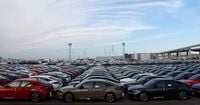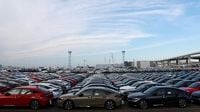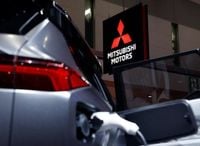Japan’s automotive industry breathed a collective sigh of relief this week as U.S. President Donald Trump signed an executive order slashing tariffs on Japanese automobile imports and other products, a move that comes after months of tense negotiations and uncertainty. The order, signed on September 4, 2025, lowers tariffs from a punishing 25%—and in some cases, an even steeper 27.5%—to 15%. This adjustment, formalized after a July agreement, marks a pivotal moment for both nations’ economies and for the global auto trade at large.
Prime Minister Shigeru Ishiba of Japan welcomed the development, calling it “just excellent.” In a Friday statement, Ishiba underscored the high stakes for his government: “Tariff negotiations between Japan and the United States was the top priority for the government and we have put all our effort into achieving an agreement in a best possible way as soon as possible.” According to Reuters, Ishiba’s administration had faced mounting pressure from right-wing rivals within his own party following a disappointing July election result, with some voices calling for his resignation. The successful outcome of the trade talks, however, has provided Ishiba with a crucial political win at a turbulent time.
The deal’s significance goes beyond simple tariff rates. As CNBC reported, the agreement includes a $550 billion Japanese investment in U.S. projects, a commitment confirmed in a joint statement signed by Japan’s top tariff negotiator Ryosei Akazawa and U.S. Commerce Secretary Howard Lutnick. The investment package is set to fund key sectors such as energy infrastructure, semiconductor manufacturing, critical minerals mining, and shipbuilding, with projects to be selected by the U.S. government and completed by January 2029—coinciding with the end of Trump’s current presidential term.
“Our historic trade deal with Japan delivers $550 billion for America to invest and strengthen our nation. We will use the funds to build our energy infrastructure, chip manufacturing, critical minerals mining, and shipbuilding to name a few,” Lutnick posted on social media, highlighting the far-reaching ambitions of the agreement.
The new tariffs are slated to take effect seven days after the order’s official publication and will be retroactively applied from August 7, 2025. Akazawa clarified that the reduction applies not only to automobiles but also to auto parts, with reciprocal tariffs on most other goods set at the same 15% rate—without the controversial “stacking” that had initially alarmed Japanese officials. Aircraft and aircraft parts, however, are excluded from these reciprocal tariffs. The two countries had originally agreed on the lower rates in July, but a preliminary U.S. draft mistakenly added 15% on top of existing rates. After a swift objection from Tokyo, Washington acknowledged the error and agreed to fix it, promising to refund any excess import duties already paid.
For Japan’s automakers, the change is a mixed blessing. Bloomberg noted that Toyota, the world’s largest automaker, had flagged a nearly $10 billion profit hit from the previous tariffs. Yet, the company praised Trump’s efforts at reaching a deal, stating, “While nearly 80% of the vehicles Toyota sells in the US are made in North America, this framework provides much needed clarity.”
Clarity, however, doesn’t always mean comfort. For smaller automakers like Mitsubishi Motors, Mazda, and Subaru, the 15% tariff remains a heavy burden. Unlike Toyota and Honda, these companies have less manufacturing presence in North America, making them more vulnerable to tariff shocks. Mitsubishi, which does not produce cars in North America, has been forced to raise U.S. prices by an average of $2,403 per vehicle since tariffs began—more than any other automaker, according to CarGurus data cited by Reuters. In fact, Mitsubishi recently cut its profit forecast by nearly a third, and its CEO Takao Kato has openly discussed the need for potential North American factory collaborations in response to changing environmental regulations.
Subaru, which sold 668,000 vehicles in the U.S. last year, has responded by eliminating the base version of its Outback model for next year and raising prices on several models. Mazda, meanwhile, saw its Mexico-to-U.S. shipments drop by 54% in the four months starting April 2025 compared to the previous year, and has shifted its focus to boosting production of its CX-50 crossover SUV at a joint plant with Toyota in Alabama. Chief Executive Masahiro Moro explained that Mazda has cut incentives on Mexico-made models to preserve margins, while analysts expect the company to deepen its partnership with Toyota.
It’s not just Japanese automakers who are feeling the effects. South Korea, another major auto exporter, is still awaiting a similar executive order from the U.S. that would lower tariffs on its vehicles from 25% to 15%. Shares of major Japanese automakers rose slightly following the news, while those in South Korea dipped as investors waited for clarity.
Financial markets responded positively to the news. Japan’s Nikkei 225 index closed up 1.03% to 43,018.75 on September 5, 2025, its highest level in over two weeks, buoyed by optimism over the trade deal and a 1.4% rise in July household spending. Asian chip stocks also surged after Trump announced plans to impose tariffs on semiconductor imports from firms that do not relocate production to the U.S., with companies like Advantest and Lasertec posting notable gains.
The deal’s fine print contains several other noteworthy provisions. The joint U.S.-Japan statement includes Japan’s agreement to purchase 100 Boeing planes, boost its annual procurement of U.S. defense equipment “by billions of dollars,” and explore a new Alaskan liquefied natural gas offtake agreement. Importantly, the agreement ensures that Japan, the U.S.’s fifth-largest trading partner, will always receive the lowest tariff rate on chips and pharmaceuticals of all Washington’s trade pacts.
Not all Japanese exports are out of the woods, though. The lower tariffs do not apply to vehicles shipped to the U.S. from Japanese-owned factories in Mexico and Canada, which remain key production hubs. Cars that qualify under the North American trade pact will only be taxed on their non-U.S. content, but others may still face higher tariffs. This loophole has led Mazda to reduce its U.S.-bound shipments from Mexico and adjust its pricing strategies accordingly.
Politically, the trade deal arrives at a delicate moment for Prime Minister Ishiba. As Reuters pointed out, Ishiba’s ruling coalition is set to vote on Monday on whether to hold an extraordinary leadership election—a move that could see him ousted after his party’s recent electoral setbacks. Still, Ishiba hopes the successful negotiation will help him weather the storm, having sent a letter to President Trump inviting him to visit Japan and expressing a desire to build “a golden era of Japan-U.S. relations.”
For now, the agreement offers a rare moment of certainty in a global trade environment often characterized by volatility and brinkmanship. Whether it will be enough to secure Ishiba’s political future or guarantee the long-term health of Japan’s auto industry remains to be seen, but the deal has undoubtedly reshaped the landscape for both nations’ economies.


